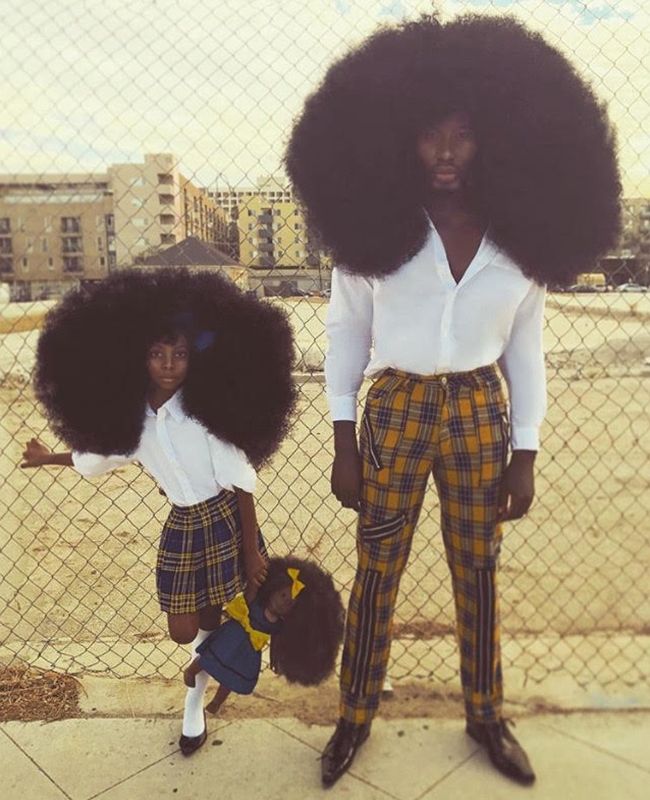Natural hair reveals a lot about the wearer's identity.
In fact, there's an entire academic field dedicated to analyzing what physical bodies communicate to others.
Scholars of an embodiment, like me, examine the body as a medium for expression. We see human bodies as the physical and symbolic form through which social hierarchies, control, and etiquette manifest. How bodies look, how bodies are worked upon, and how bodies are treated by others can all be a starting place for discussing the broader dynamics among a group of people. After all, we move through the world within our bodies, and our most meaningful interactions occur in physical space.
Sociologists, anthropologists, and historians focusing on the body research a gamut of practices, like plastic surgery, violence, reproduction, sports, beauty, and fashion. Each of these topics has much to tell us about our relationships to one another and to ideologies. Examining hairstyling can be especially revealing of social dynamics because hair is the most malleable part of our physical selves. Hair can be cut, colored, dyed, covered, gelled, waxed, plucked, lasered, dreadlocked, braided, relaxed or any combination of the above. Hair also signifies age (through greying), health (through hair loss or overgrowth), race (through texture and color), and gender (through the presence or absence of secondary sex-characteristics and hair styling). Because of this versatility, hair is the body's ripest material for creative self-expression.
Examining hairstyling can be especially revealing of social dynamics because hair is the most malleable part of our physical selves. Hair can be cut, colored, dyed, covered, gelled, waxed, plucked, lasered, dreadlocked, braided, relaxed or any combination of the above.
The way someone wears his or her hair communicates much about that person's stance towards the world. For a familiar illustration, the collective celebration of natural hair has become a symbol for self-acceptance and self-love in the face of broader stigmas that deem curly hair ugly, unprofessional or exotic. Since hair length is tied to femininity, big chopping in a patriarchal society expresses a radical self-love. And, since hair texture is tied to racialization, wearing natural hair can be used to embrace one's heritage.
Beyond natural hair, other hairstyles are taken up to express political commitments and identities. At the peak of the women's suffrage movement, young women flappers wore short haircuts in resistance of Victorian gender ideals that their generation was coming to see as limiting and outdated. For another example, middle-class African American beauty culturists advocated for hair straightening as a strategy for assimilating into mainstream white culture and uplifting the race in the 1930s. Later, as the United States increased activity in Vietnam in the 1960s, hippie men wore long hair as a performative critique of capitalist imperialism and military culture. Subcultures like goths and punks also use hair to express their anti-establishment orientations.
Hair is also incorporated in various spiritual rituals to express one's commitment to faith, modesty or humility. In Hinduism, tonsuring, or head shaving is often performed to signify a right of passage or when grieving the loss of a close loved one. In the Old Testament of the Bible, Samson's hair was the physical root of his God-given strength. This parable forms the basis of the way many groups think about the power of hair, as in Rastafarianism, where dreadlocks are worn in both reverence to scripture and to Afrocentricity. For another religious example, Orthodox Jewish women wear head coverings called snoods or wigs to demonstrate modesty after they get married. Similarly, some Muslim women choose to wear hijabs in public spaces to practice modesty or as an outward cultural-religious expression.
In sum, hair is more than just hair. How we wear it says much about who we are, our historical context and what we value. Take a look at your grandmother, your favorite celebrity or an old photograph of yourself from middle school through the eyes of a sociologist of embodiment. What educated guesses can you make about what life is or was like for the person you chose? What do they believe in? How are they seen by others?
